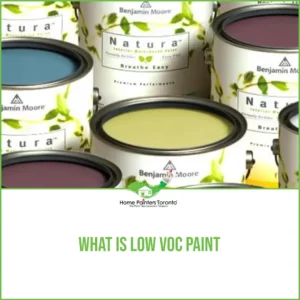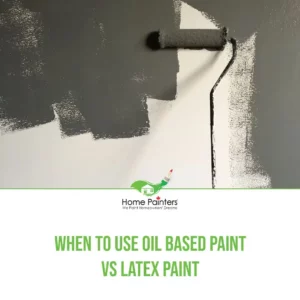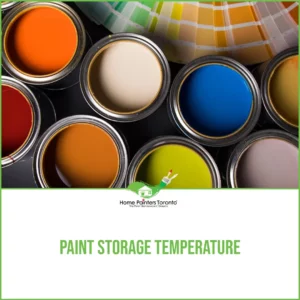
As society increasingly places emphasis on personal health and environmental sustainability, selecting the right VOC paint for our homes and workspaces is becoming more than a matter of aesthetics. Volatile Organic Compounds (VOCs) found in many paints may contribute to environmental pollution and pose health risks. Consequently, many consumers choose Low VOC paint or Zero-VOC paint as healthier alternatives. In this blog, we’ll explore the differences between Low VOC paint and No-VOC paint to help you make an informed decision.
Difference Between Low VOC Paint and No-VOC Paint
There’s nothing like the smell of fresh paint, right? You may feel as though you enjoy the smell, but there’s a lot going on there beyond the smell of fresh paint. This is where the topic of VOCs comes into play and, furthermore, whether you should be using low VOC paint or zero VOC paint. We’re going to take you through all the criteria. So, to learn more and to gain a little perspective on your decision, keep reading!
What Does VOC Mean?
To start, VOC stands for “volatile organic compound.” VOCs are partially responsible for that lovely fresh paint smell we’ve discussed. VOCs are organic materials that turn to vapour at room temperature to break it down. They’re often put into interior paints to stop the growth of mould and mildew. These carbon-containing substances found primarily on various building materials, let off gasses that can have long or short-term health effects for some people. They’re also not great for the environment. So, with all that in mind, the government now regulates them.
But how do you decipher the different paint types and figure out which is best for you? Let’s find out.
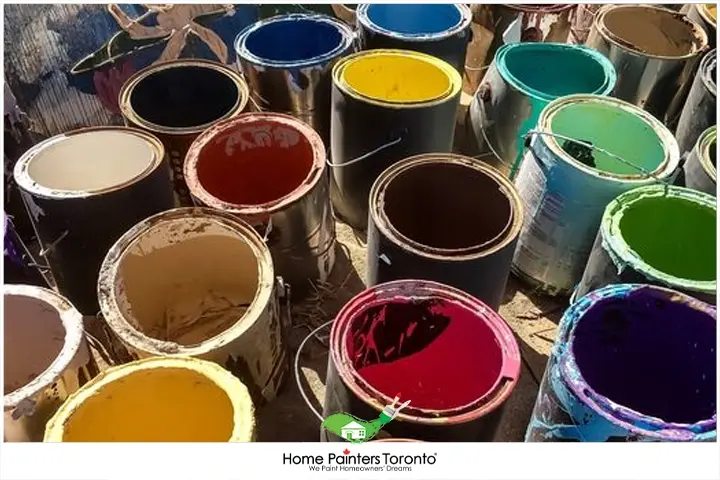
Things to Consider About Low VOC Paint
Low VOC paint should contain fewer than 50 grams per litre of volatile compounds. That is if it means the Green Seal standards. It’s still important to consider that when it says “low VOC paint,” it’s lower than other paints. It doesn’t mean there are no VOCs in the paint. Low VOC paint is a safer option. It just depends on where you want to use it and your considerations. Most of these paints you’ll find are actually latex based.
Zero VOC Paint
Another label to be on the watch for is zero VOC paint or no VOC paint. This label can be misleading at times. It doesn’t technically mean that no VOCs are contained in this paint. When you see the label zero VOC paint, the level falls below the government-regulated standard. This is usually at or below 5 grams of volatile organic compounds per litre.
OTHER CONSIDERATIONS
There are some considerations to think about when you’re trying to make your interior paint and exterior paint decisions.
- Consider the pigments: You might start with a paint low in volatile compounds, but once you add pigments, that can change. When you add pigment and change the tint in your paint, it often adds solvents. These changes towards various tints and hues can increase VOCs, which means more off-gassing chemicals.
- Some VOCs aren’t as harmful: This is where you have to do your research. You might find that some paint or stain, particularly if it’s made from more natural elements like plants, will show high levels of VOC. But are they chemically harmful to their environment? Maybe not. Be sure to read your labels and do a little reading up.
- The smell isn’t the only factor. When picking out your interior paint, it shouldn’t revolve around lowering the strong smells. Some interior paints are higher in VOCs, but they’ve added some chemicals to cover up the smells. So, be mindful of how you feel around new paint. If you have headaches or feel dizzy, it may be time to consider your interior paint choices carefully.
Comparing Low and Zero VOC: Which is Better?
When choosing between Low VOC paint and No-VOC paint, several factors come into play. The health and environmental advantages undeniably tip the scales in favour No-VOC paint. Significantly reducing toxic emissions contributes to a healthier indoor environment and minimizes air pollution.
However, it’s essential to consider the paint’s performance and durability. While No-VOC paints have progressed significantly to match the quality of conventional paints, some users may find that Low VOC paint offers a marginally better finish, colour richness, or durability.
Additionally, the cost can be a determining factor. No-VOC paints tend to be more expensive than their Low VOC counterparts – a trade-off those prioritizing health and environmental responsibility may be willing to make.
So, What Is The Best Low VOC Paint?
There are several brands to choose from when picking out the best low-VOC or zero-VOC paint for your home. Here are some you should check out:
- Benjamin Moore Aura: This is Zero VOC paint with a low odour that’s still mildew resistant and possesses proper coverage.
- Ultra Zero VOC By Dulux: This interior latex paint is also self-priming and “practically odourless.”
- Harmony Interior Acrylic Latex By Sherwin Williams: This interior paint is a zero VOC formula contributing to cleaner indoor air quality.
Low VOC Paint vs No-VOC Paint: Which Should You Choose?
The choice between No-VOC and Low-VOC Paint ultimately comes down to your specific priorities. If you’re primarily concerned about the environment and reducing smog, Low VOC paint would be a commendable choice.
On the other hand, if you’re particularly sensitive to chemicals, or you’re painting a room for young children, seniors, or those with respiratory difficulties, Zero VOC paint may be the better choice for minimizing potential health risks.
In both cases, the quality and attractiveness of the finish are comparable to those of traditional paints. However, it’s worth noting that the healthier the paint, the more expensive it tends to be.
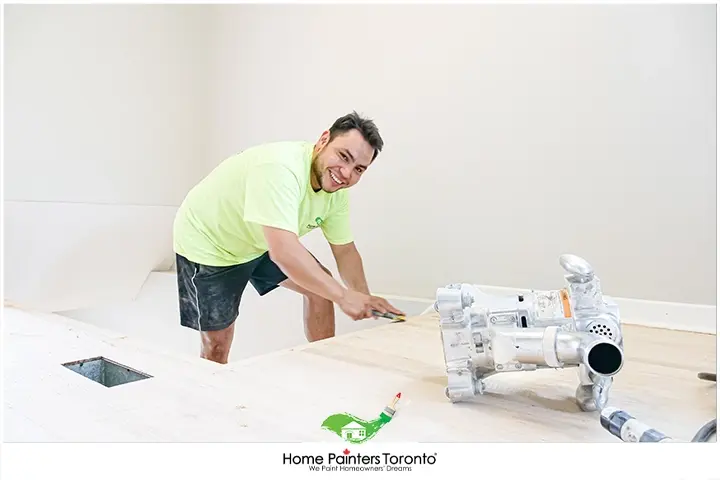
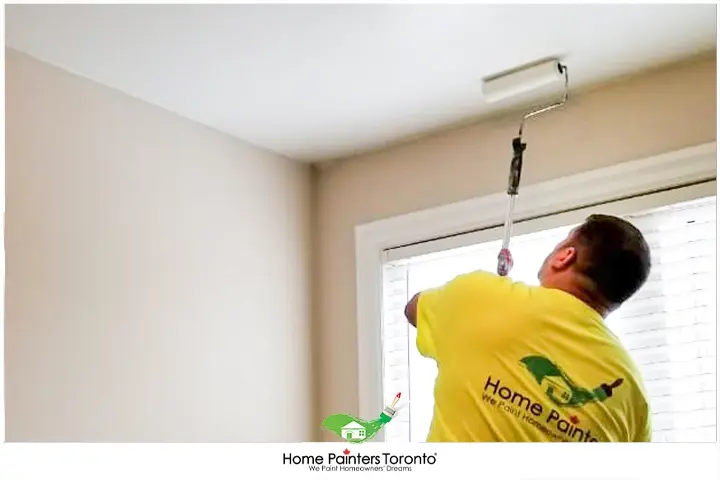
IN CONCLUSION
Low VOC and Zero VOC paints are responsible choices compared to traditional paints. They reduce your exposure to harmful chemicals and their contribution to air pollution. Painting with these more eco-friendly alternatives can be part of a bigger commitment to a greener lifestyle without sacrificing the look and feel of your home.
More Interesting Blogs Related to
“Should You Use Low VOC Paint Or Zero VOC Paint”
Of course, if you aren’t feeling up to the house painting work, why not let Home Painters Toronto take a load off your back? With over 36 years of painting experience in both residential house painting as well as commercial painting, let our professional painters handle everything. Call us at 416.494.9095. Or shoot us an email at Brian@HomePaintersToronto.com to get a FREE estimate for your interior painting project and consultation about what paint to choose.
Allow our professional house painters to handle all the hard work for you! And don’t forget to follow us on all our social channels below!


